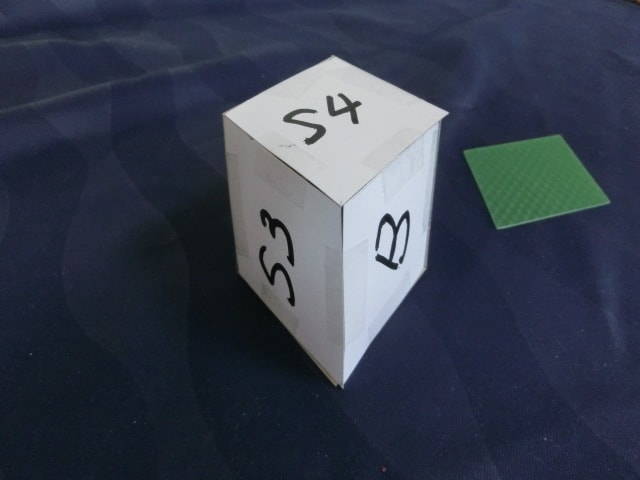Are they Chinese spoons? Unsure...
Previously, my renge spoons were typical(?) renge spoon imitations, as you can see here below.
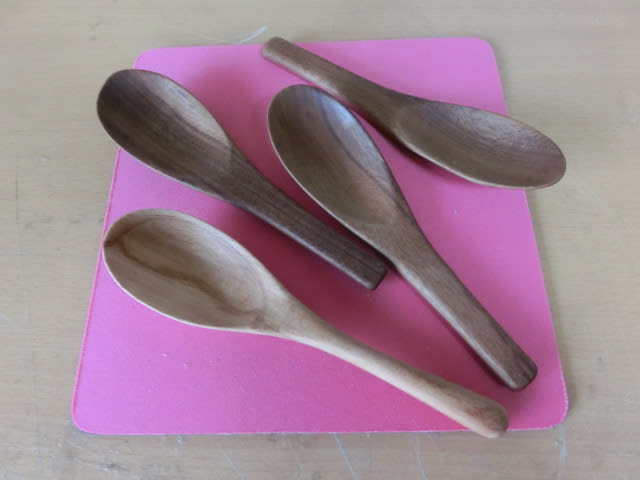
They are the three brownish ones on the right hand side and they were not unpopular. However, they were still distinctively Chinese (?) looking. Nothing wrong with that, of course. It is just the taste.
It was about time that I produced new designs, universal designs. The odd man out in this same photo is my attempt. You can see more clearly with the next two photos.
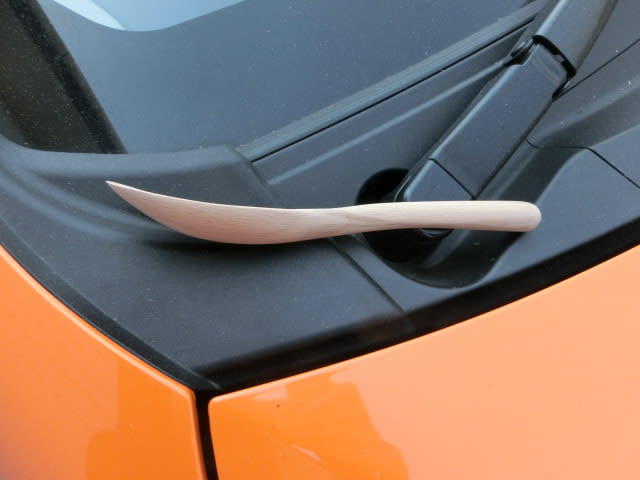
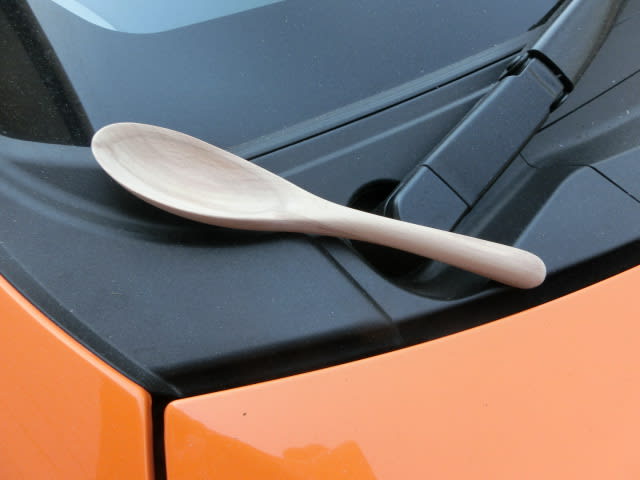
I do not like it. It does not look Chinese, but it is no good. It is too deep at the spoon end. You can see the extent of the depth with the next photo.
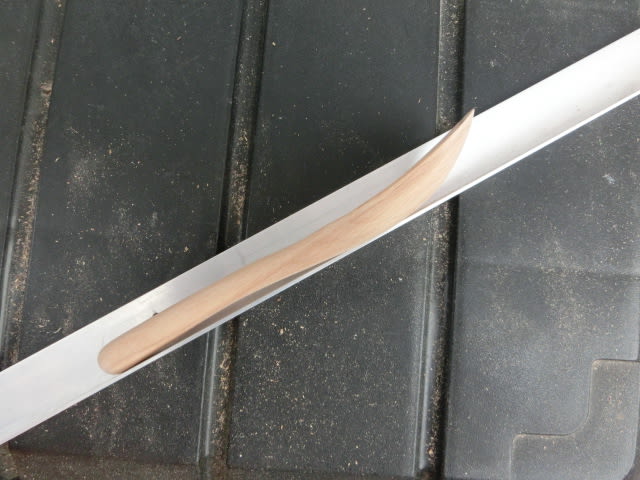
The same spoon is sitting on the L angled aluminum piece, which is a depth (or thickness) jig. In this case it is as deep as 20 mm. My short tongue would not reach its bottom...
There was an additional reason. You cannot work efficiently with this thickness. Normally, or almost always I work with 34 mm thick wood, bought directly from a shop. In order to take out 2 pieces from the same area of wood its thickness must be less than 17 mm. And, I happen to have a 16 mm jig.
However, working with thin pieces does have problems. The lateral curvature can be restrictive, more so if the handle or stem length is short. You ideally want somewhat accentuated lateral profile. Here below is my answer.

It came into being accidentally. All I knew was that given the starting thickness I will have to make the spoon end flattish. If any, even at the expense of looking odd. It was all accidental, but I knew, in so doing, it started resembling something I had seen before.
It was the rice spatula, sold commonly at 100 yen shops, I think. I swear I did not copy it. Besides, I do not think that rice spatulas have thickness issues that I had.
Following three photos should suffice to show you what I am on about.
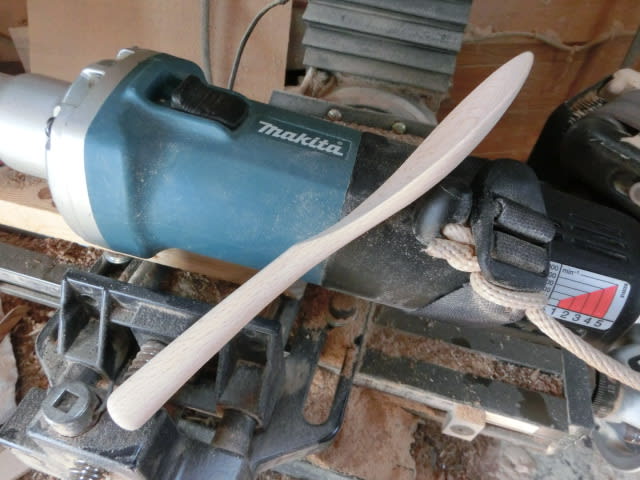

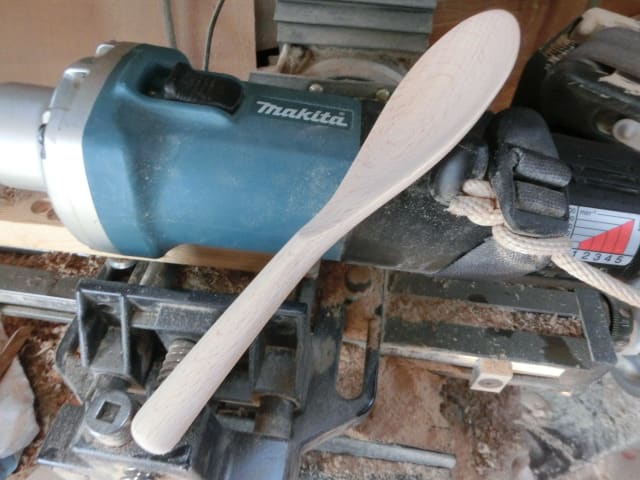
Relatively short stem, very shallow spoon area, and yet comfortable hand grip, all these properties combine to present this particular type of renge spoons as a proud member of my portfolio.
I am very much pleased about this accidental outcome today. These should make very good gifts, actually...
Previously, my renge spoons were typical(?) renge spoon imitations, as you can see here below.

They are the three brownish ones on the right hand side and they were not unpopular. However, they were still distinctively Chinese (?) looking. Nothing wrong with that, of course. It is just the taste.
It was about time that I produced new designs, universal designs. The odd man out in this same photo is my attempt. You can see more clearly with the next two photos.


I do not like it. It does not look Chinese, but it is no good. It is too deep at the spoon end. You can see the extent of the depth with the next photo.

The same spoon is sitting on the L angled aluminum piece, which is a depth (or thickness) jig. In this case it is as deep as 20 mm. My short tongue would not reach its bottom...
There was an additional reason. You cannot work efficiently with this thickness. Normally, or almost always I work with 34 mm thick wood, bought directly from a shop. In order to take out 2 pieces from the same area of wood its thickness must be less than 17 mm. And, I happen to have a 16 mm jig.
However, working with thin pieces does have problems. The lateral curvature can be restrictive, more so if the handle or stem length is short. You ideally want somewhat accentuated lateral profile. Here below is my answer.

It came into being accidentally. All I knew was that given the starting thickness I will have to make the spoon end flattish. If any, even at the expense of looking odd. It was all accidental, but I knew, in so doing, it started resembling something I had seen before.
It was the rice spatula, sold commonly at 100 yen shops, I think. I swear I did not copy it. Besides, I do not think that rice spatulas have thickness issues that I had.
Following three photos should suffice to show you what I am on about.



Relatively short stem, very shallow spoon area, and yet comfortable hand grip, all these properties combine to present this particular type of renge spoons as a proud member of my portfolio.
I am very much pleased about this accidental outcome today. These should make very good gifts, actually...















